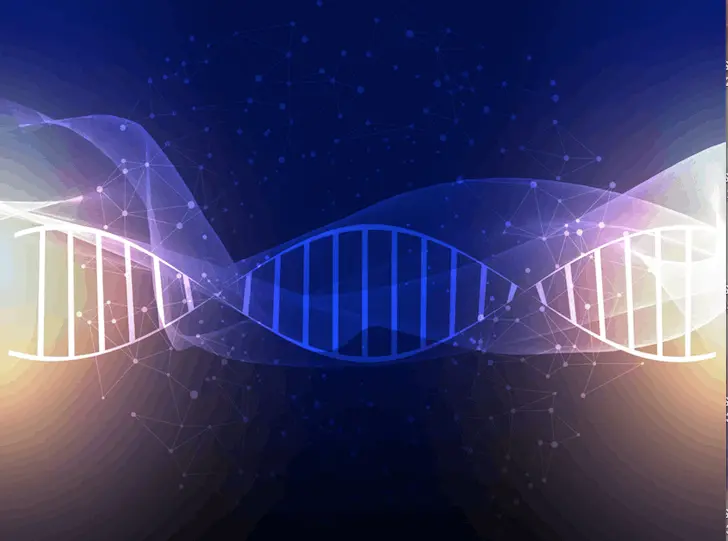Artificial intelligence nowadays dominates our news feeds, capturing public interest as ChatGPT and similar AI advancements take center stage. Biologists are actively investigating novel ways to use AI to utilize the abundance of chatbots to understand the complex operations of our genes.
The Power of Artificial Intelligence in Gene Activation Research
The University of California, San Diego scientists investigating the intricate puzzle of gene activation have uncovered a significant breakthrough. By utilizing the potential of artificial intelligence, mainly through machine learning techniques, researchers successfully identified a “gateway” DNA activation code known as the downstream core promoter region (DPR). This unique DNA sequence acts as a key to unlocking the activation of up to one-third of our genes, influencing crucial processes such as growth, development, and disease.
Uncovering Rare DNA Sequences
The researchers utilized machine learning techniques to unveil novel “synthetic extreme” DNA sequences designed for specific gene activation purposes, building upon their previous breakthroughs. Through a comparative analysis of the DPR gene activation region in humans and fruit flies (Drosophila), the researchers employed artificial intelligence (AI) to explore millions of diverse DNA sequences. The remarkable results of the study were published in the journal Genes & Development. By leveraging AI, the team successfully identified rare, customized DPR sequences that exhibit activity in humans but not in fruit flies and vice versa. This pioneering approach holds tremendous potential for the discovery of synthetic DNA sequences possessing unique properties that could greatly benefit the fields of biotechnology and medicine.
In the future, this technique could be utilized to discover rare artificial DNA sequences that have practical and valuable applications. Instead of comparing humans and fruit flies, the authors believe that exploring the potential of drug A in activating a gene for condition X rather than drug B for condition Y. This innovative approach could also be employed to identify specific DNA sequences that trigger gene activation in tissue one under condition X, but not in tissue two under condition Y. The utilization of AI in this strategy opens up numerous real-world possibilities. Although the artificial extreme DNA sequences might be incredibly scarce, potentially occurring in just one out of a million instances, the power of AI could uncover their existence.
In machine learning, a branch of artificial intelligence (AI), computer systems constantly evolve and acquire knowledge through information and experience. In a recent investigation, the researchers “trained” machine learning models using 200,000 well-established DNA sequences derived from actual laboratory experiments. These sequences served as examples of the machine learning system employed. Subsequently, human and fruit fly machine learning algorithms were exposed to a staggering set of 50 million test DNA sequences. Its task was to scrutinize the sequences and identify distinctive patterns within the two extensive datasets.
AI-Assisted Gene Activation
The researchers directed their focus towards a key question: Can AI models identify exceptional cases where gene activation is highly active in humans but not in fruit flies, despite the fact that the machine learning systems indicated a significant overlap between human and fruit fly sequences? The answer was a resounding “yes.” The computer learning models effectively pinpointed distinctive DNA sequences specific to humans and fruit flies. Conventional wet lab testing methods were employed by the researchers to validate the functional properties of these extraordinary sequences as predicted by AI.
Initially, the researchers doubted the AI models’ ability to foresee the behaviors of 50 million sequences in advance, particularly the extraordinary outlier sequences with peculiar activities. Thus, it is truly awe-inspiring and exceptionally noteworthy that the AI models successfully anticipated the actions of these rare, extraordinary sequences, which occur only once in a million. The researchers expressed that conducting the equivalent of 100 million wet lab experiments, which the machine learning technology analyzed, would be virtually unattainable due to the extensive time required, which was nearly three weeks for each experiment.
The machine learning system’s remarkable identification of the unique sequences stands as a triumphant showcase, opening doors for further utilization of machine learning and various other AI advancements within the realm of biology.
Innovative applications of AI technologies such as ChatGPT are emerging in various aspects of everyday life. Here, the authors presented a novel utilization of AI in generating distinctive DNA fragments to activate specific genes. The researchers suggest that this approach holds significant potential for valuable applications in biotechnology and biomedical research. In a broader context, biologists are only scratching the surface of AI’s capabilities as they begin to tap into its immense power.
Conclusion
The integration of artificial intelligence (AI) into gene activation research has opened up new frontiers and shed light on the existence of rare DNA sequences. Through its remarkable computational power and ability to analyze vast amounts of genomic data, AI has catalyzed the discovery and understanding of previously elusive genetic elements. This strategy infused with AI possesses an abundance of practical implementations in the real world. Conceivably, among the vast multitude of DNA sequences, there may exist an incredibly rare one in a million. In such a scenario, the prowess of artificial intelligence (AI) emerges as the ideal tool to unveil and detect these synthetic, extraordinary DNA sequences.
Article Source: Reference Paper | Reference Article
Learn More:
Dr. Tamanna Anwar is a Scientist and Co-founder of the Centre of Bioinformatics Research and Technology (CBIRT). She is a passionate bioinformatics scientist and a visionary entrepreneur. Dr. Tamanna has worked as a Young Scientist at Jawaharlal Nehru University, New Delhi. She has also worked as a Postdoctoral Fellow at the University of Saskatchewan, Canada. She has several scientific research publications in high-impact research journals. Her latest endeavor is the development of a platform that acts as a one-stop solution for all bioinformatics related information as well as developing a bioinformatics news portal to report cutting-edge bioinformatics breakthroughs.









